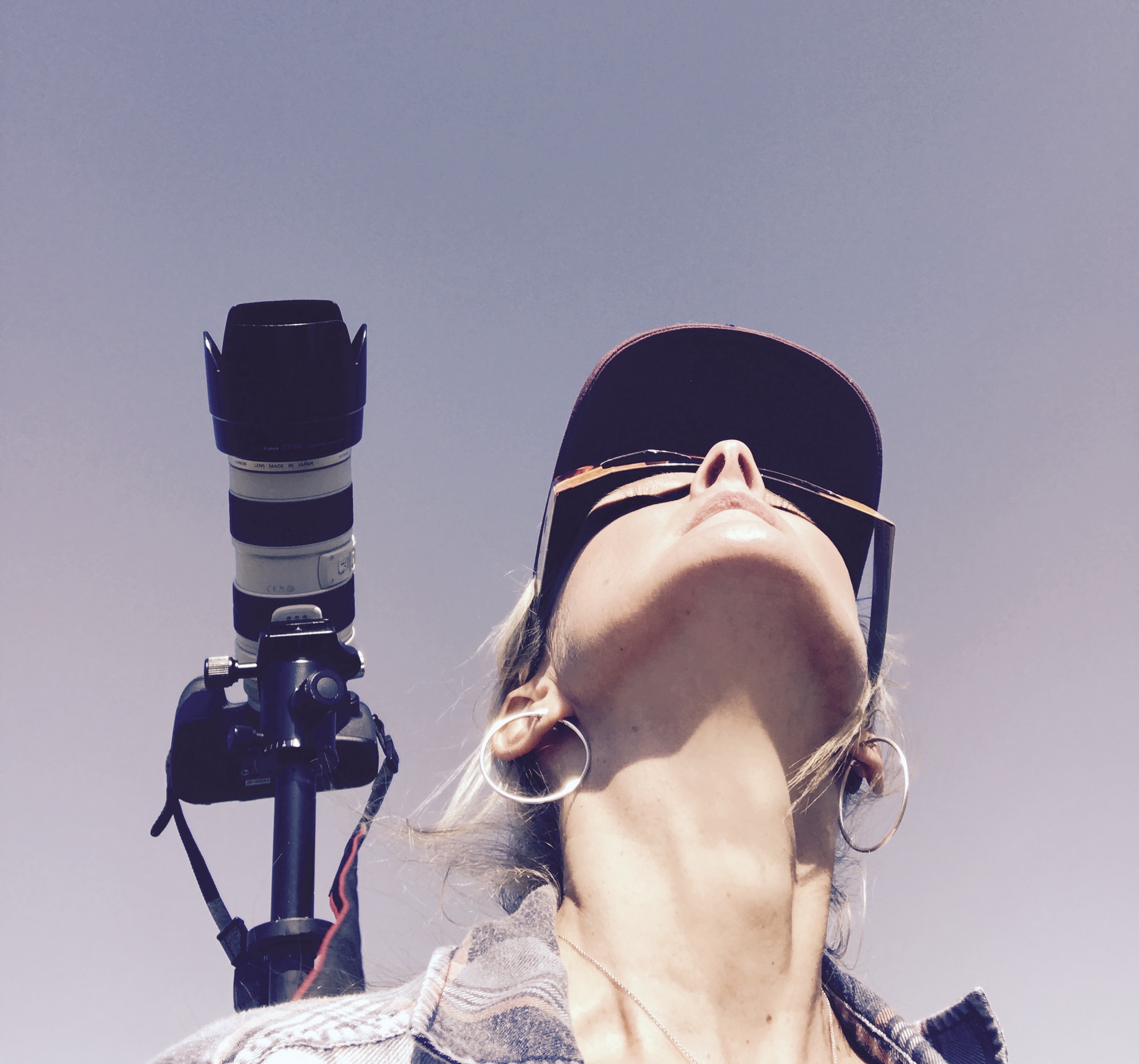
Cathlena Spencer: Technological Innovation Hiding in Plain Sight
November 17, 2023 by Jessika Leatherbury
By: Sunnie Dawn Baker
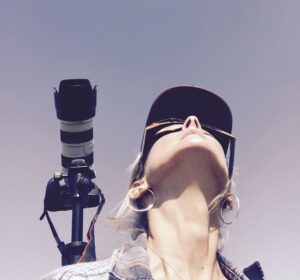 Cathlena Spencer first became interested in camouflage when she was a little kid. She was eleven years old, and her father was stationed at Fort Bragg. Being surrounded by the military culture, her young mind would look at the patterns around her and think about the importance of camouflage in her world. Still she had an artistic eye and a talent for photography. Decades later, she would find a way to combine these two interests into something that was both unique and valuable.
Cathlena Spencer first became interested in camouflage when she was a little kid. She was eleven years old, and her father was stationed at Fort Bragg. Being surrounded by the military culture, her young mind would look at the patterns around her and think about the importance of camouflage in her world. Still she had an artistic eye and a talent for photography. Decades later, she would find a way to combine these two interests into something that was both unique and valuable.
Historically, camouflage has always been created by artists. According to Spencer, “Companies like Realtree pride themselves on the fact that the original is artist rendered.” When Spencer was thinking about how camouflage is made, though, she came to the realization that photography, especially with all of the technological advancements in the field, could provide much more accurate data when it came to visually recreating a particular environment. Spencer’s realization led her to develop what she calls “site specific geo-located camouflage.”
This technology revolutionizes camouflage design. There is an app called CamoScience that utilizes her innovative approach. In the app, the user starts by picking a dispersal pattern that matches closest to the area in question. Then the app takes a video of a specific area where they would like to blend in to the environment. The app distills the video into many different photographic stills that then construct layers to replicate the patterns in the user’s desired environment. One of the unique things about this technology is that it can work in any environment. Traditionally, producing good camouflage for environments with elements of water or snow has been difficult, but CamoScience excels in this aspect. It can work in the wetlands, in the tundra, in the forest, and even urban areas. The technology essentially uses augmented reality. However, as Spencer says, “This is augmented reality before augmented reality was a thing. I have been using this in an app on my smartphone since 2010.”
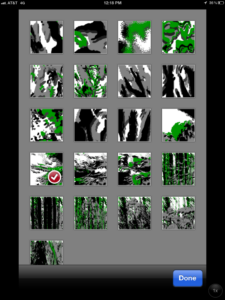
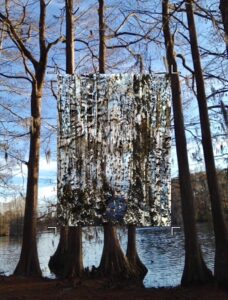 This idea was first formed with Special Operation Forces in mind. One of Spencer’s friends was working in Special Forces and asked her to “put eyes on something.” After developing CamoScience, Spencer and her partner, K. Dominic Cincotti, vetted this application with that target audience in mind. Spencer says, “The reason that this really exists is the need to create a better camouflage for our military.” However, in 2011, Spencer and her team were sitting around her dining room table in Wilmington, North Carolina, thinking about submitting their technology for the military’s camouflage improvement program. They were planning on entering the program, but in the end, they couldn’t make themselves hit send. According to Spencer, “We couldn’t pull the trigger. It was too big and had more applications than just the military. We didn’t want it getting stuck and held up.” This was also the moment when Spencer moved from innovator to tech entrepreneur.
This idea was first formed with Special Operation Forces in mind. One of Spencer’s friends was working in Special Forces and asked her to “put eyes on something.” After developing CamoScience, Spencer and her partner, K. Dominic Cincotti, vetted this application with that target audience in mind. Spencer says, “The reason that this really exists is the need to create a better camouflage for our military.” However, in 2011, Spencer and her team were sitting around her dining room table in Wilmington, North Carolina, thinking about submitting their technology for the military’s camouflage improvement program. They were planning on entering the program, but in the end, they couldn’t make themselves hit send. According to Spencer, “We couldn’t pull the trigger. It was too big and had more applications than just the military. We didn’t want it getting stuck and held up.” This was also the moment when Spencer moved from innovator to tech entrepreneur.
While CamoScience is not currently available to the public, Spencer is not opposed to doing so in the future. However, it is currently being used “exclusively for individual projects,” she says. While the military applications are obvious and evident, the commercial applications could also be far reaching. For instance, if an apparel or outdoors company wanted to purchase this patented technology, they could enable their users to customize their own camouflage with the use of a simple phone app. Spencer, who has a family ranch outside of Ada, has many examples of how a more perfect camouflage could be made for deer hunting or duck blinds. While the app can utilize the colors from the natural environment or the military specification colors that armed forces are allowed to use, it also gives the option to change the color palette as well if someone wanted to use these patterns for fashion instead of utility.
Spencer, who now has several patents to her name, did not set out to become a tech entrepreneur, let alone someone who works in defense technology. However, when the opportunity presented itself, she took hold and moved forward with gusto and determination. She spends hours researching and then doing more research. She says, “I try to be an active observer and to stay informed on the goings-on of the world. Not just in tech or defense. I factor music, art, style, literature, current events, politics, finance, entertainment, pop culture—all of that affects the process.” This journey, though, has taken her to places she never would have dreamt and allowed her to meet people she never would have met. For Spencer, that is the best thing about being an entrepreneur—the opportunities to connect with interesting and innovative individuals.
The hardest part of being an entrepreneur, according to Spencer, is that there is “never enough time or money” to accomplish all the things that she wants to do. However, as a life-long learner, she keeps researching, thinking, learning, and innovating. Tech entrepreneurship can take many forms, sometimes it can be right in front of us, and sometimes it can be hidden. In Spencer’s case both her childhood experiences and friendships introduced her to the world of camouflage, illuminating her possibilities while she ensured that some things can always be hidden.
Sign up to receive more news from the Ada Jobs Foundation HERE!
Written by
Jessika Leatherbury
You may also interested in:

Adapt and Overcome: Allison Poe’s Recipe for Resilience and Growth
By: Sunnie Dawn Baker Allison Poe has always followed her feet. She waits for the signs to appear and, once she recognizes them, she travels that path, and has never
Jeff Warren: A Life in Sound, Vision, and Storytelling
By: Sunnie Dawn Baker When Jeff Warren got involved in the Houston music scene as a teenager, he had no clue where his path would lead. Now, nearly thirty years
From Pitch to Progress: ECU's Glass Recycling Program Turns Waste into Opportunity
By: Sunnie Dawn Baker In 2018, Dr. Christine Pappas competed in Ada Jobs Foundation’s Big Pitch Competition by promoting grinding glass bottles into sand. She won the Big Pitch that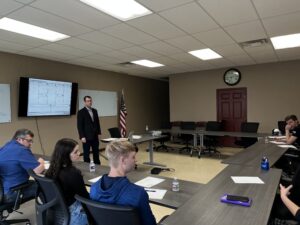
The Importance of Customer Discovery: Know Your Audience and Know Your Market
By: Sunnie Dawn Baker Entrepreneurs and small business owners must consider many factors to achieve success, with their target market being one of the most crucial. Sometimes, when people are
What Does Economic Development Do for You? The Significance of the Economic Multiplier
By: Sunnie Dawn Baker People often find the term “economic development” vague and confusing. Understanding how economic development works and benefits the community can be challenging. Though there are many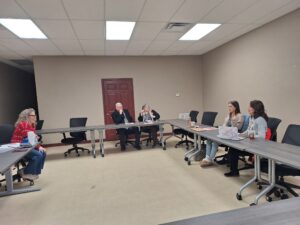
Helping Entrepreneurs One Workshop at a Time: Lauri Rowe and QuickBooks for Small Businesses
Entrepreneurs tend to be filled with passion and big ideas. They have found a solution to a problem they see in the world, and they barrel ahead, excited for their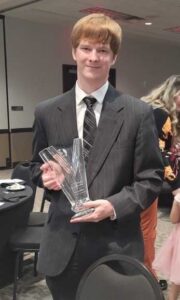
Hunter Cook: Technology, Entrepreneurship, and the Written Word
By: Sunnie Dawn Baker Hunter Cook started writing when he was seven years old. At first, he wanted to write comic books, but then he realized he couldn’t draw. He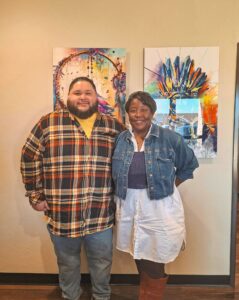
Empowering Native Artists: FAME App Brings Innovation to First American E-Commerce
By: Sunnie Dawn Baker Entrepreneurs are problem solvers. They are constantly striving for solutions to issues they see in the world or in their own lives. In the case of
Learn, Connect, and Grow: 2025 Workshops for Aspiring and Current Business Owners
By: Sunnie Dawn Baker A new year brings new possibilities, and, at the Ada Jobs Foundation, it also brings a new round of programming and workshops. As the local Economic